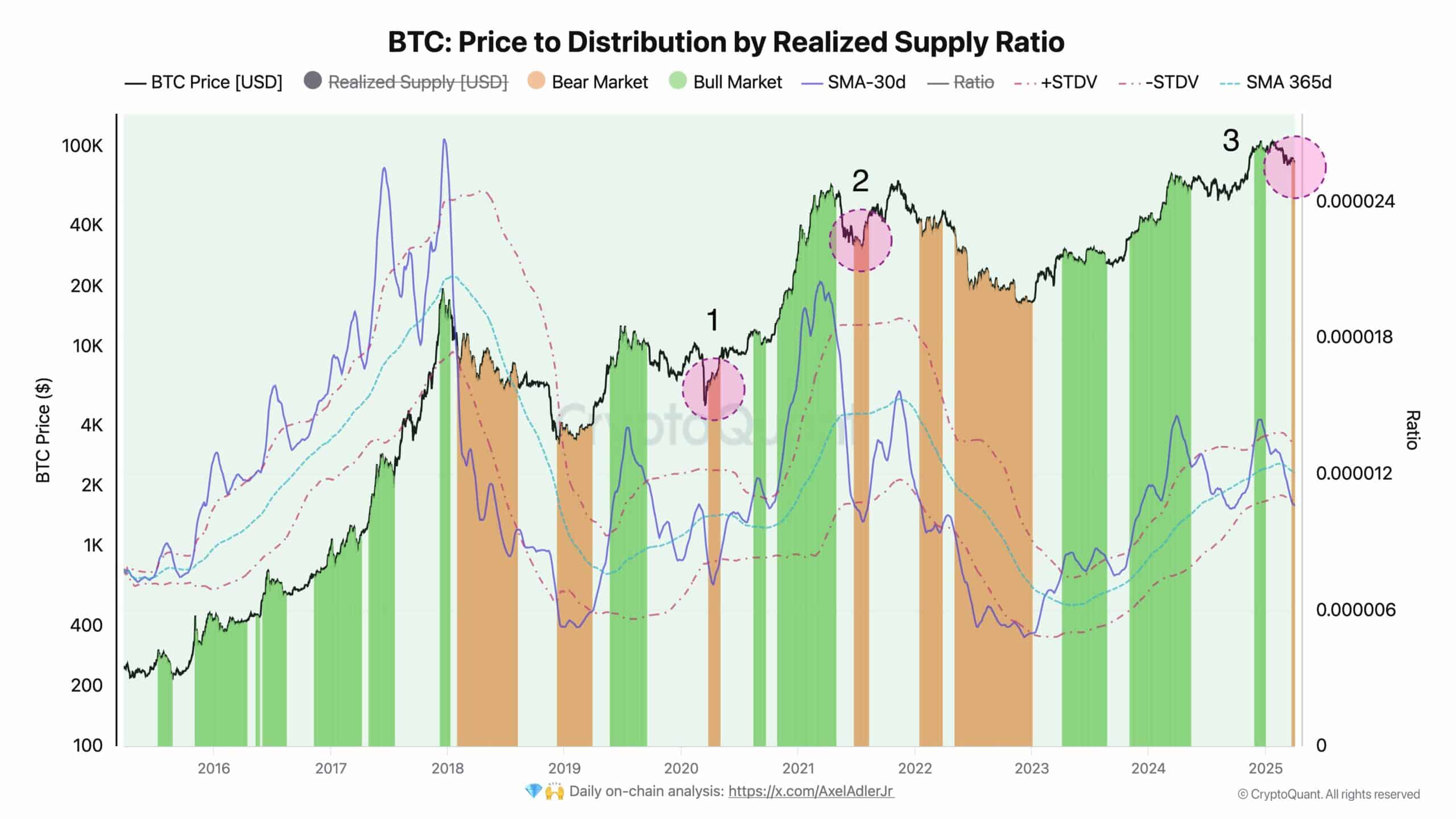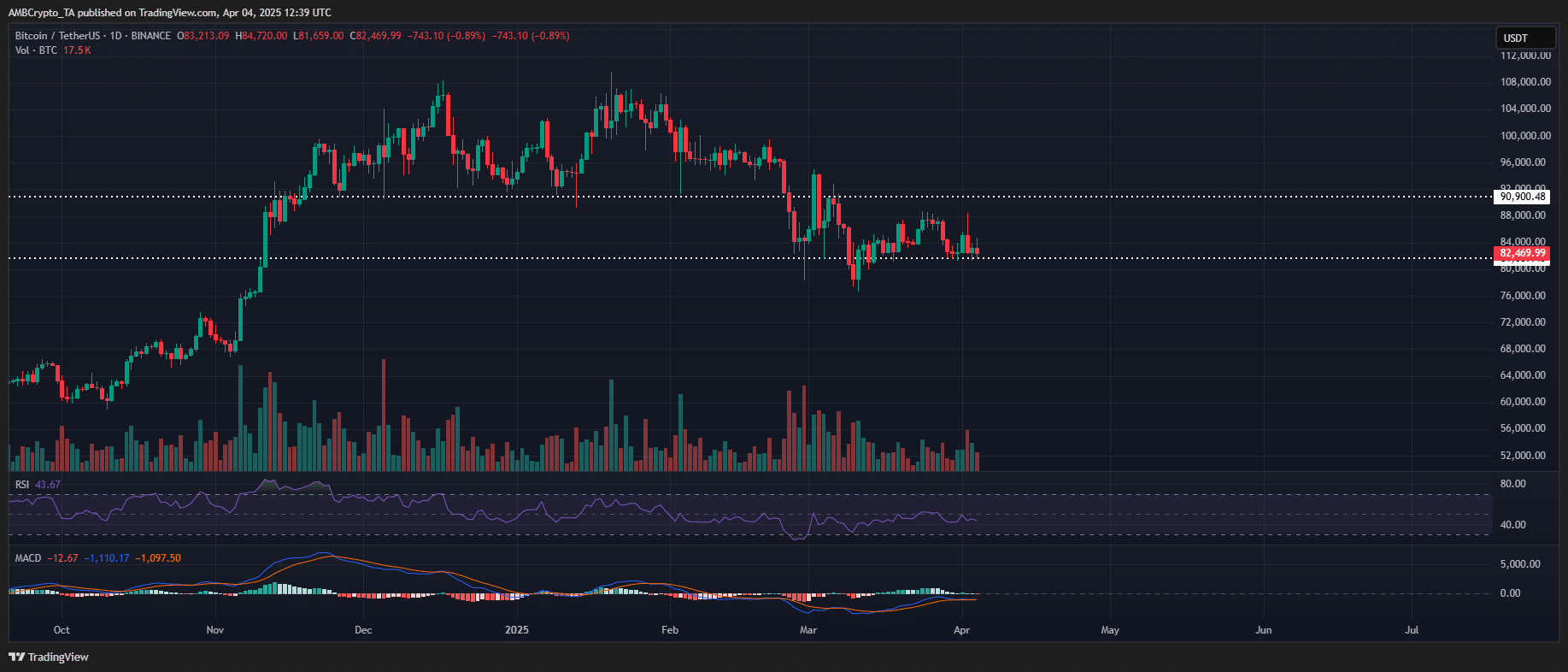- Bitcoin is currently in an undervaluation zone where sharp sell-offs were followed by strong rebounds.
- Can Bitcoin repeat its historical trends under current macroeconomic conditions?
Bitcoin [BTC] is approaching an undervaluation phase as indicated by its 30-day realized supply metric.
Historically, such conditions have preceded significant market movements, either through capitulation-driven corrections or a relief rally from a local bottom.
Put simply, realized supply refers to the total amount of Bitcoin that hasn’t been moved in a certain period, giving us insight into how much of the supply is actively traded.
When realized supply is high, it suggests increased activity, while a low realized supply can indicate that Bitcoin is being held by long-term investors or dormant addresses.
As shown in the chart, during past two corrections, BTC’s 30-day moving average of realized supply (purple) dipped below the lower dotted line, signaling oversold conditions.


Source: CryptoQuant
This pattern occurred during the COVID-19 crash and post-China mining ban, both followed by rebounds. A similar setup is emerging now.
After a volatile Q1 with a nearly 11% drop, BTC’s 30-day realized supply is bottoming out, signaling that Bitcoin is undervalued.
Historically, this has marked a point of capitulation, where selling pressure fades and buyers step in at lower prices, often sparking a rebound or relief rally.
Low liquidity: A sign of market maturation?
Typically, when fewer coins are actively traded, it often signals that more holders – such as institutions and long-term investors – are adopting a “HODL” mindset, reducing the frequency of trades.
In the long run, such conditions may pave the way for Bitcoin to be seen more as a store of value or a hedge, similar to gold.
However, for a bull run to materialize, buyers need to step in.
While the “HODL” sentiment reduces liquidity influx, the sell-side pressure from weak hands must be absorbed to establish a market bottom, paving the way for a potential relief rally.
In essence, mitigating sell-side liquidity from derivative markets, where call orders dominate sentiment, is critical. But are bulls buying into the undervaluation signal?
A bullish breakout for Bitcoin still in limbo?
Despite Bitcoin maintaining support above the $80k level amid macroeconomic headwinds, a definitive shift into a full-blown bull market has yet to materialize.
Long-term holders (LTHs) liquidated 1,058 BTC at an average of $82k as tariff news hit the market, leading to a retracement back to $81k.
As Q2 unfolds, the lingering effects of Trump’s policies on retail sentiment will likely continue to dampen bullish momentum.
While undervaluation signals could prompt institutional accumulation, coupled with HODLing behavior that maintains support above $80k, retail inflows remain tepid.


Source: TradingView (BTC/USDT)
This lack of retail participation is a key factor that inhibits significant price movement toward $90k in the short term.
Without a notable shift in market structure or sentiment from retail investors, the likelihood of a breakout this quarter appears muted.







